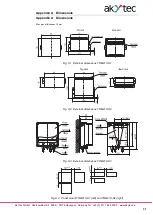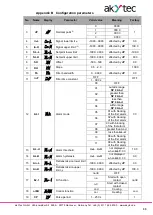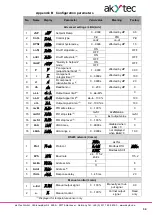
Operation and Configuration
akYtec GmbH · Vahrenwalder Str. 269 A · 30179 Hannover · Germany Tel.: +49 (0) 511 16 59 672-0 · www.akytec.de
19
6.10.4
Control hysteresis
The Control hysteresis
HYSt
(
Adv
group) is a configurable parameter for output types R,
T, C, S (see Fig. 6.8) in the on-off control mode.
Fig. 6.8 Heating (a) and Cooling (b)
The Control hysteresis (
HYSt
) can be set within the range 0.0…999.9 ºС for temperature
sensors (RTD or TC) and within the range 0…9999 for linear signals.
6.11
PID-control
PID control can be used (
CntL
= Pid) with all types of output.
The controller generates the control signal on the output to reduce the deviation between
the process value
Pv
and the setpoint
SP
. The control signal depends on:
–
P-component
– defined by the proportional band constant, that multi-
plies the deviation (
Pv
–
SP
)
–
I-component
– defined by the integral time constant, the time required
by the integral component to generate the output equivalent to the proportional com-
ponent
–
D-component
– defined by the derivative time constant, the time re-
quired by the proportional component P to repeat the output provided by the deriva-
tive component D
For efficient operation of the PID controller it is necessary to set correct values of the
coefficients
P
,
i
and
d
for the specific control object. They can be defined by using Auto-
tuning (see 7.3) or Manual Tuning (see 7.4).
One of the control functions, Heating or Cooling, should be selected in the parameter
orEU
(see Fig. 6.9).
Heating
– output signal decreases with the increase of the process value
Cooling
– output signal increases with the increase of the process value
Fig 6.9 Control function
Output
ON
OFF
a)
b)
ON
OFF
HYSt HYSt
T
T
















































